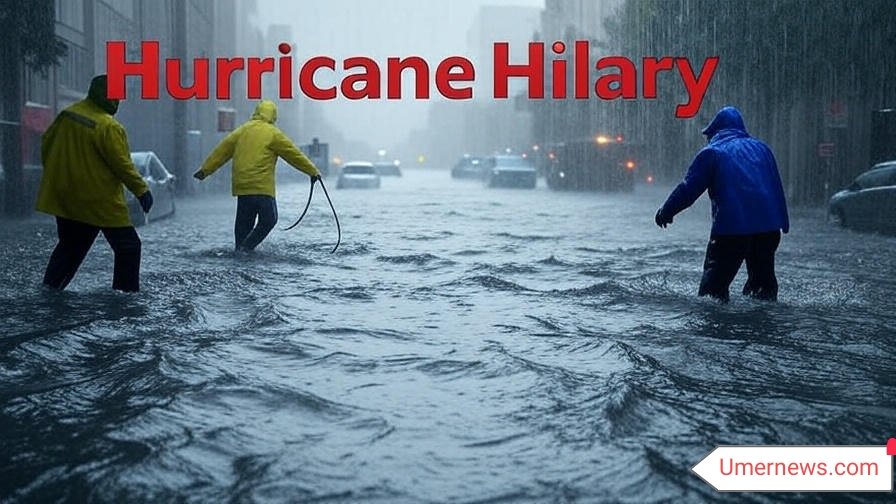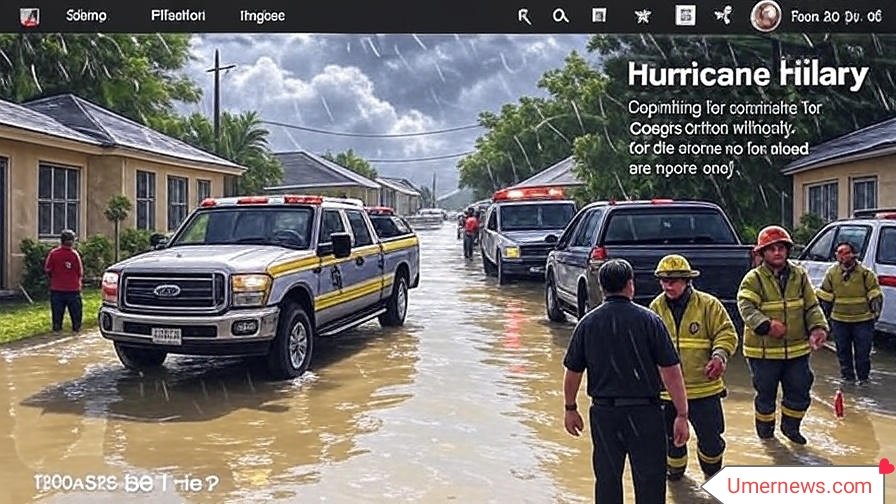Hurricane Hilary
Contents
Hurricane Hilary: A Historic Storm’s Impact and Lessons

Hurricane Hilary, a significant weather event in 2023, left a lasting mark on the southwestern United States and Mexico’s Baja California peninsula. As a powerful tropical cyclone, it brought unprecedented rainfall, flooding, and disruptions, challenging the region’s preparedness.
Formation and Path of Hurricane Hilary
Hurricane Hilary formed in August 2023 in the eastern Pacific Ocean, rapidly intensifying into a Category 4 hurricane before making landfall. According to the National Hurricane Center (NHC), it developed from a tropical wave and gained strength due to warm sea surface temperatures.
- Key Formation Details:
- Originated as a tropical depression on August 16, 2023.
- Reached Category 4 status with winds up to 145 mph on August 18.
- Weakened to a tropical storm before impacting Baja California and Southern California.
- Path tracked northward, unusual for Pacific hurricanes, affecting areas unaccustomed to such storms.
The storm’s trajectory made it a rare event, as it brought heavy rainfall to arid regions like Southern California and Nevada, areas typically unprepared for tropical cyclone impacts.
Impacts of Hurricane Hilary
Hurricane Hilary caused widespread flooding, mudslides, and infrastructure damage across Mexico and the U.S. Southwest. Its effects were particularly severe in areas unaccustomed to heavy rainfall, as reported by NOAA.
- Major Impacts:
- Mexico: Baja California saw significant flooding, damaging homes and roads.
- United States: Southern California and Nevada experienced record-breaking rainfall, leading to flash floods and mudslides.
- Economic Losses: Estimated damages reached hundreds of millions, per FEMA.
- Power Outages: Thousands of households lost power due to downed lines.
- Evacuations: Over 10,000 residents were evacuated in flood-prone areas.
The storm’s impact highlighted vulnerabilities in infrastructure and emergency preparedness in regions not typically hit by hurricanes.
Table: Hurricane Hilary Impact by Region

| Region | Rainfall (inches) | Key Impacts | Reported Damages |
|---|---|---|---|
| Baja California, Mexico | 10–15 | Flooding, road closures, home damage | $50–100M |
| Southern California | 3–9 | Flash floods, mudslides, power outages | $200–300M |
| Nevada | 2–6 | Urban flooding, infrastructure strain | $10–50M |
Source: Compiled from NOAA and FEMA reports.
Response and Recovery Efforts
Governments and communities mobilized swiftly to address the crisis. Federal and state agencies, alongside local organizations, coordinated relief efforts to mitigate the damage caused by Hurricane Hilary.
- Response Measures:
- Emergency Declarations: California and Nevada issued states of emergency to access federal aid.
- Relief Efforts: FEMA provided funding for temporary shelters and repairs.
- Community Support: Local NGOs distributed food and supplies to affected families.
- Infrastructure Repairs: Teams worked to restore roads and power lines within weeks.
Recovery efforts focused on rebuilding resilient infrastructure and improving flood management systems, as noted by the U.S. Geological Survey (USGS).
Lessons Learned from Hurricane Hilary
Hurricane Hilary underscored the need for better preparedness in non-traditional hurricane zones. The storm’s unusual path and intensity prompted discussions on climate change and its role in altering weather patterns.
- Key Takeaways:
- Climate Adaptation: Arid regions need updated flood management plans.
- Early Warning Systems: Enhanced forecasting saved lives, per NHC.
- Community Preparedness: Public education on evacuation and safety is critical.
- Infrastructure Resilience: Investments in drainage systems are essential to mitigate future risks.
These lessons are vital for policymakers and communities to reduce future risks from similar storms.
FAQs About Hurricane Hilary
What was Hurricane Hilary’s peak strength?
Hurricane Hilary reached Category 4 status with maximum sustained winds of 145 mph on August 18, 2023, according to the National Hurricane Center.
Which areas were most affected by Hurricane Hilary?
Baja California, Southern California, and Nevada faced the brunt of the storm, experiencing heavy rainfall, flooding, and mudslides.
How much damage did Hurricane Hilary cause?
Preliminary estimates suggest damages ranged from $260–450 million across affected regions, per FEMA.
Did climate change contribute to Hurricane Hilary?
While no single storm can be directly attributed to climate change, warming ocean temperatures likely intensified Hilary, as noted by NOAA.
How can communities prepare for similar storms?
Communities should invest in early warning systems, flood defenses, and public awareness campaigns, as recommended by the USGS.
Conclusion
Hurricane Hilary 2023 was a wake-up call for regions unaccustomed to tropical cyclones. Its unprecedented rainfall and widespread impacts exposed vulnerabilities in infrastructure and preparedness. By learning from this event, communities can better adapt to changing weather patterns driven by climate change. Through improved forecasting, resilient infrastructure, and public education, future risks can be minimized. For more updates on weather events and preparedness tips, visit umernews.com.








